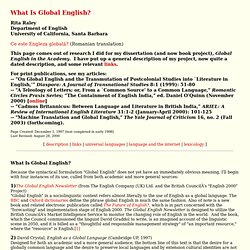

Wortschatz - International Portal. UNIFON. Geert Hofstede cultural dimensions. Geert Hofstede’s Cultural Dimensions National cultures can be described according to the analysis of Geert Hofstede.

These ideas were first based on a large research project into national culture differences across subsidiaries of a multinational corporation (IBM) in 64 countries. Subsequent studies by others covered students in 23 countries, elites in 19 countries, commercial airline pilots in 23 countries, up-market consumers in 15 countries, and civil service managers in 14 countries. Together these studies identified and validated four independent dimensions of national culture differences, with a fifth dimension added later. If you follow the links below you will find a map of the world for each cultural dimension, which enables you to quickly see how similar or different countries or regions are. • Power Distance • Individualism • Masculinity • Uncertainty Avoidance • Long-Term Orientation The drawbacks of applying the Hofstede Model Secondly, how accurate is the data?
Onomasiology Online (OnOn) - ed. Joachim Grzega, Alfred Bammesberger, Marion Schöner: onomasiologie, onomasiologia, lexicology, lexicologie, Lexikologie, lessicologia, lexicologia, etymology, étymologie, etimologia. Steven Pinker. Global English. What Is Global English?

Rita Raley Department of English University of California, Santa Barbara Ce este Engleza globală? (Romanian translation) This page comes out of research I did for my dissertation (and now book project), Global English in the Academy. I have put up a general description of my project, now quite a dated description, and some relevant links. For print publications, see my articles: -- “On Global English and the Transmutation of Postcolonial Studies into `Literature in English,'” Diaspora: A Journal of Transnational Studies 8:1 (1999): 51-80 -- “A Teleology of Letters; or, From a `Common Source' to a Common Language,” Romantic Circles Praxis Series; “The Containment of English India,” ed. Page Created: December 1, 1997 [text completed in early 1998] Last Revised: August 28, 2000 [ description | links | universal languages | language and the internet | lexicology ] What Is Global English?
My Description of Global English links: notes... Writing English as a Global Language. By Martin A.

Schell How often do you consider the possibility that the words you write will travel beyond North America, either in their original form or in translation? In most cases, you can't anticipate the number of languages that your work might be translated into nor the skill of the translators. However, there is something you can do to ensure that your meaning will be conveyed more accurately throughout the world: write the original English version as clearly as possible. When writing for a global audience, it is essential to adopt an attitude of inclusiveness that embraces readers who are unfamiliar with North American idioms and who may be incompletely fluent in our language.
If a reader's native language is not among the handful of languages that your document has been translated into, he or she would much rather read "Global English" than English that is full of buzzwords, euphemisms, and unexplained acronyms. 1. 2. 3. 4. Broadening Your Cultural Perspective 1. 2.
Language Learning.